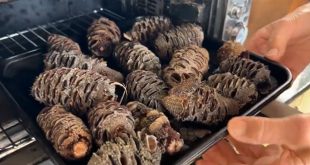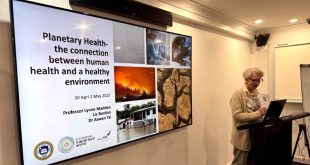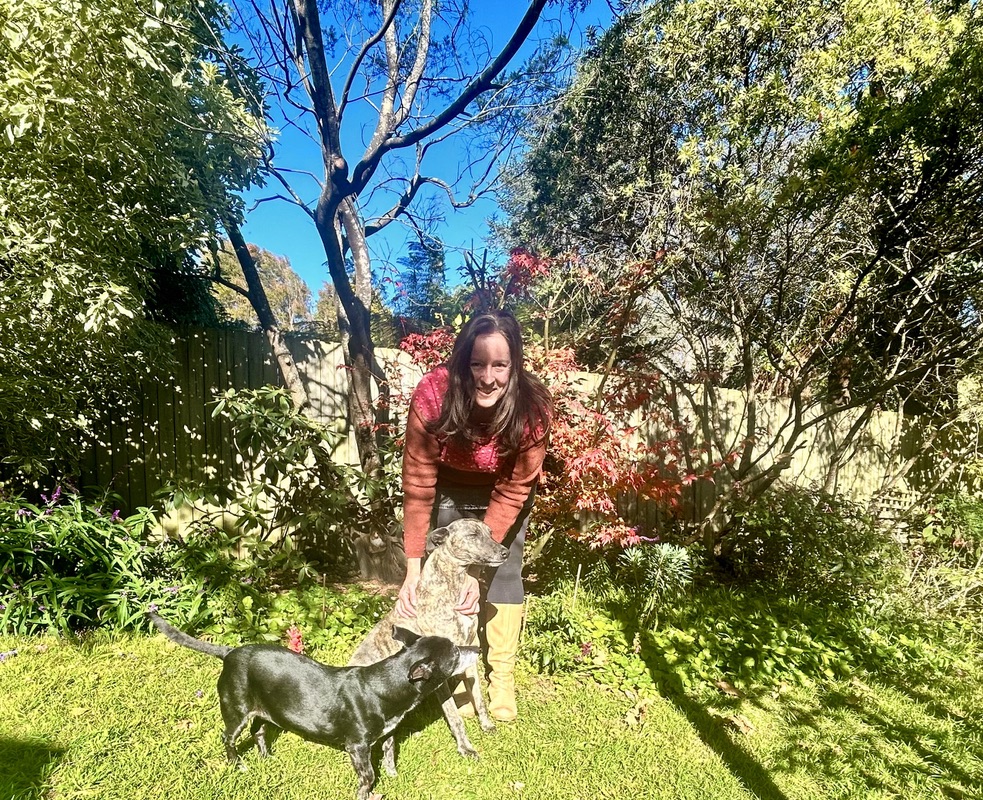
Sara Reilly and her dogs enjoy the garden (Liz Durnan)
By Sara Reilly
Sara Reilly rehabilitated her rundown garden in the heart of Katoomba into an enticing environment for the local wildlife, including dancing satin bowerbirds. She reveals the slow but richly rewarding process.
Gardening is more than trees and shrubs, wheelbarrows and lawnmowers. With the right combination of plants and ground cover, it can create an enticing physical environment for birds, insects and other wildlife to make their home or play space. What could be more satisfying than that?
This was the case for me and my quarter-acre garden in the centre of Katoomba. This piece of once natural bushland had been enclosed by subdivision and fencing for over 125 years.
Although it had a few old fruit trees, it was neglected and unloved and overgrown with every type of invasive weed. It was also dangerous and potentially contaminated, as the ground contained rubbish and a rusty old falling-down shed.
Gradual transformation from wasteland
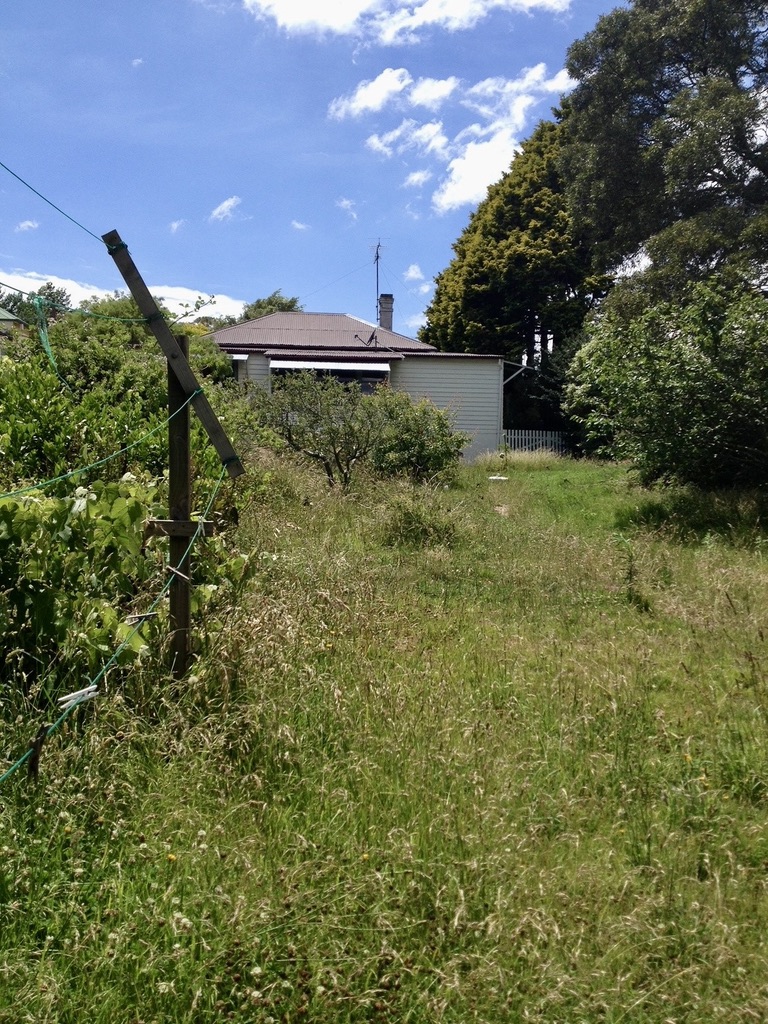
The neglected garden before
This was the garden when I first arrived. It looked neat enough to the untrained eye, but I was about to embark upon a massive learning curve. I had no idea what I was letting myself in for because I wasn’t yet a gardener. I was excited about living in a timber cottage away from the bright lights and being near the stunning natural bushland in the Blue Mountains where I had hiked and camped as a kid.
Before long, the garden was crying out for attention, with immediate maintenance needs such as keeping the grass mowed. Without me even noticing, some species were multiplying and trying to take over, both under the ground and overhead.
My experience of taking charge of a piece of landscape – stewarding it, husbanding it, nurturing it, and growing things of value within it – turned out to be about a process, not a result. Working a piece of land can never be considered truly ‘finished’. It was a revelatory process about the journey not the destination, about life itself as cycles rather than a straight line or any end point. The garden embodies those spatial and temporal principles. The seasonal transformations that express time and climate are enough to slow down a journey and encourage just enjoyment of where it’s all at.
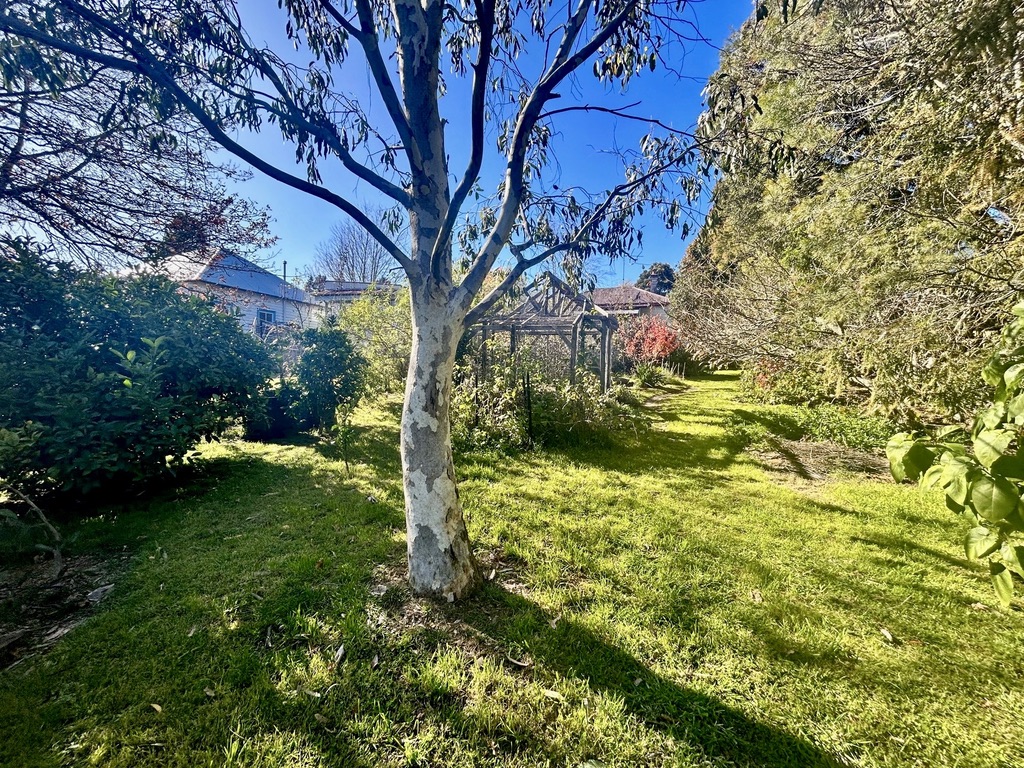
Sara’s garden after transformation, including the snow gum (Liz Durnan)
But a major marker in time occurred last year after about eight years of consistent gardening effort dovetailed with the rest of life. This was at the point that a very clever species of bird, the Satin Bowerbird, built a dance alley down the bottom of the garden. The birds began en masse their wild excitable behaviours, singing, dancing, clucking and cooing, and displaying their amazing collection of blue objects around their stick alleyway to attract and seduce mates.
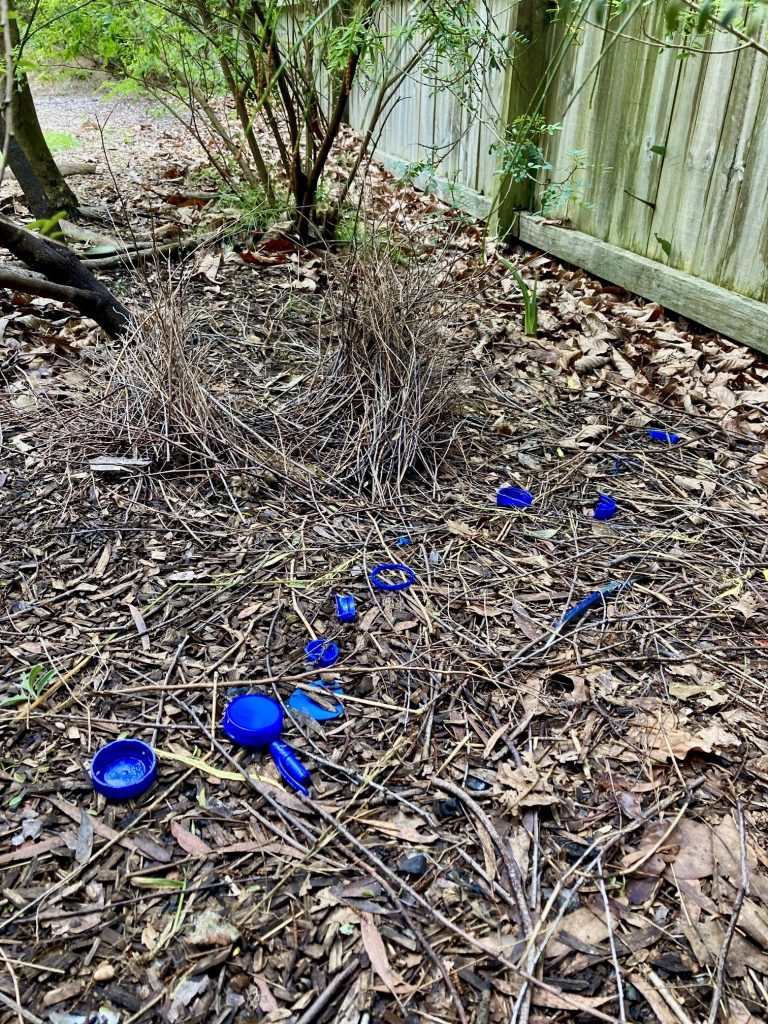
The Satin Bowerbird bower and treasure
How did it happen?
How did I get to this place where I’ve created an environment conducive to the birds moving in and building this unique structure? It was driven by my love of natives. Whilst I didn’t plan to have only natives, it helped to have a place in the garden dedicated to more of a natural area with predominantly native species and a quiet corner away from the general hubbub.
It took time for the new shrubs and trees to grow – a few years in this case – as they took hold and started to transform the landscape. An important lesson about giving ourselves time to see the result of change.
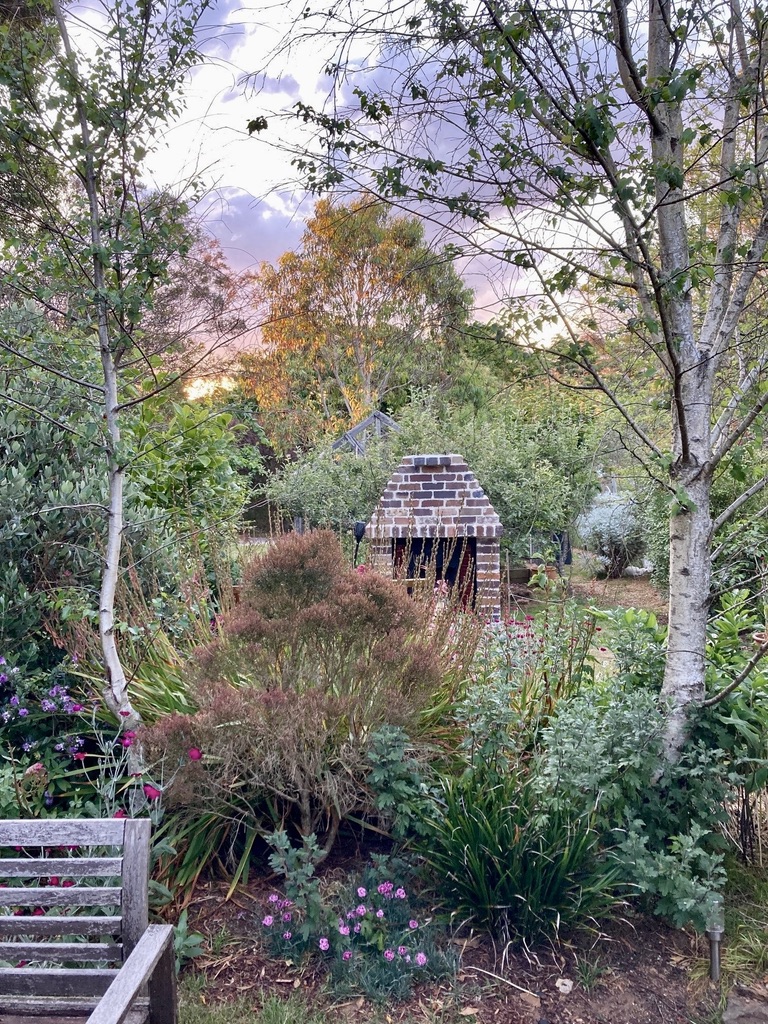
Sara’s garden with new shrubs and trees (Sara Reilly)
Here’s what else I learned from this garden rehabilitation project:
1. Weed removal
Using Blue Mountains City Council’s ‘Priority Weeds booklet’ to identify any weed species, I removed lots of privet, blackberry, cotoneaster, buddleia, agapanthus, monbretia, and holly as well as grape, jasmine, and ivy as these vines can easily get out of control. For environmental reasons, I avoided chemicals, the only exception being after we cut down the ‘privet forest’ behind the shed, we painted the stumps with Roundup using a jar and brush to stop them regrowing.
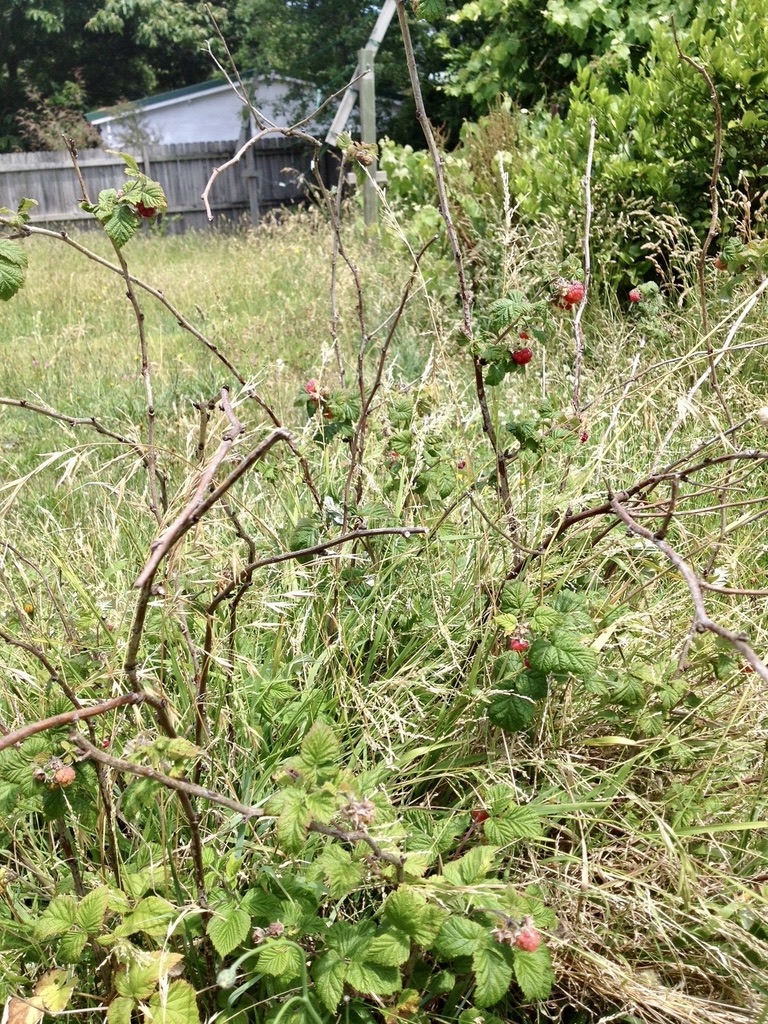
Sara’s garden before transformation, with the raspberry patch and lemon tree choked by weedy grass (Sara Reilly)
This weed removal was the first task and it needs to be permanent. Any tiny seedings of holly, ivy and privet growing out of dropped bird poo gets pulled out quick smart! Any blackberry I didn’t get out the first time that pops out of the ground gets dug up with a mattock before it can get comfortable.
2. Decontamination
The dilapidated shed was demolished as it was dangerous. In the ground around it was old rusty corrugated iron dug into the ground to prevent foxes getting into the shed when it presumably held chickens. There were lots of broken fibro pieces lying around and buried in the ground. I carefully collected these and kept them separate for disposal at the Blaxland Waste Management facility in case they were asbestos. The ground generally was full of rubbish, comprising of metal, glass, bones, plastics, fibro/asbestos, pottery and other nasties.
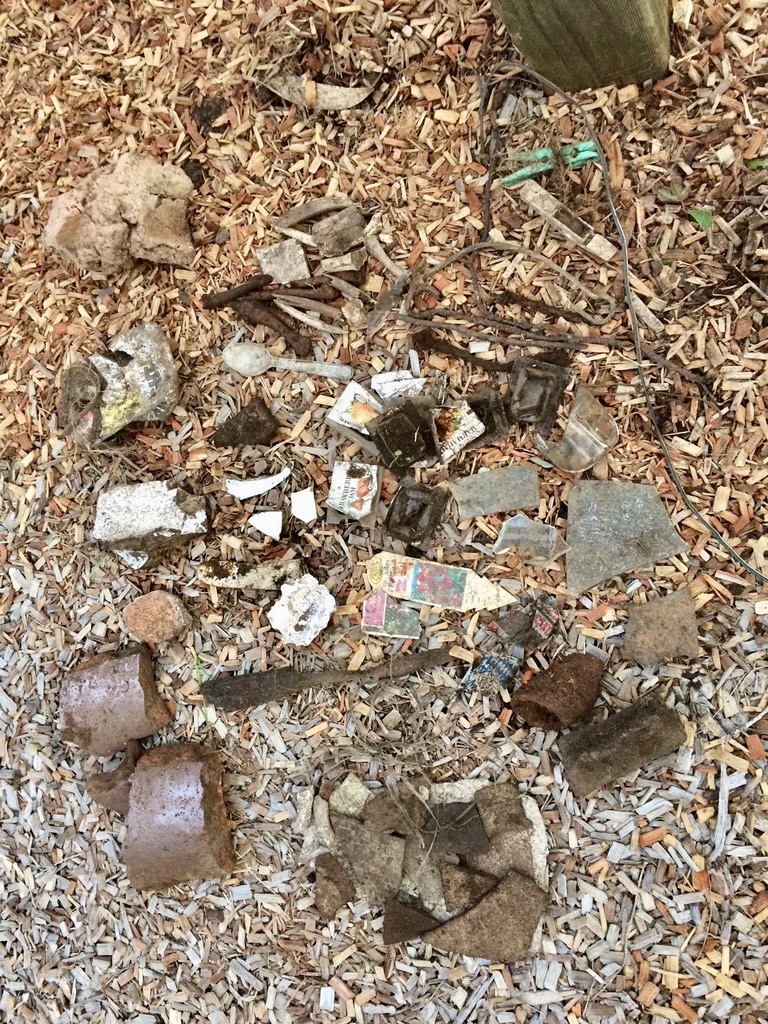
Rubbish in Sara’s garden before the transformation (Sara Reilly)
3. Garden design
Many garden designers, both historical and contemporary, talk about having zones and rooms in the garden, to break up the space and create themes, areas and ‘sense of place’. As my garden is long, I decided to follow the principle of having three zones – an ‘outdoor room’ near the back of the house, a vegetable and fruit zone, and a natural ‘bush zone’ down the bottom. These zones segue naturally from more formal, cultivated, ‘civilised’, to the wilder, more natural place furthest away from the house.
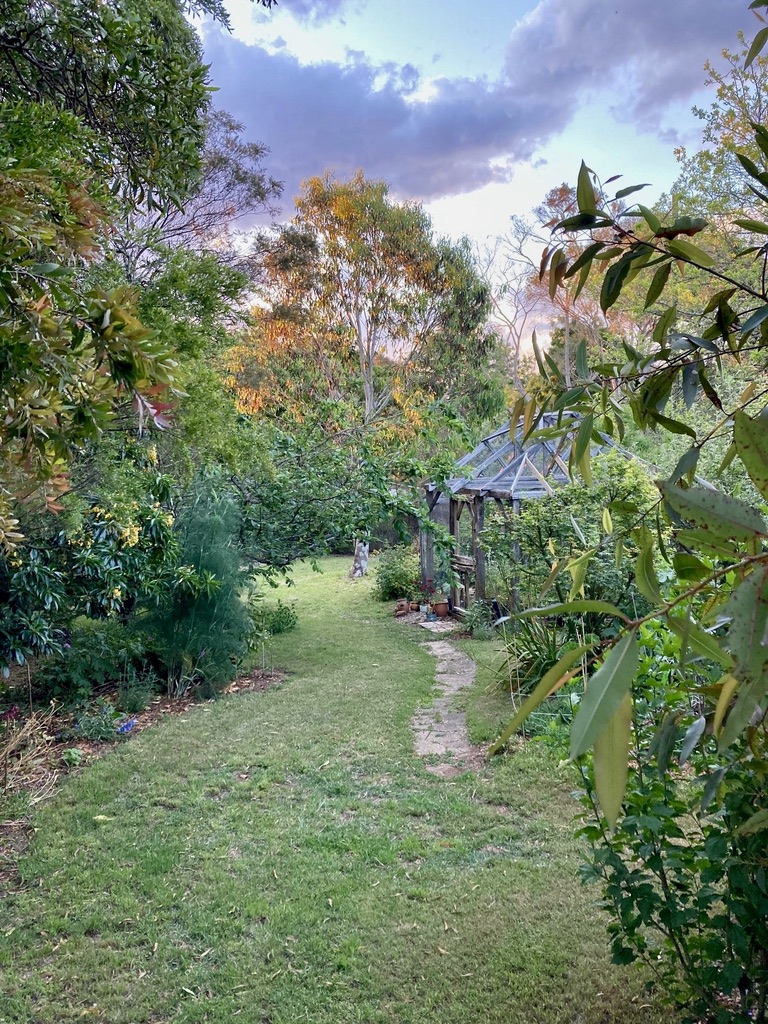
Sara has broken up her long garden into zones, from the house to the bush zone at the rear. (Sara Reilly)
4. Tree planting
I’ve planted over 25 new trees in my small patch to complement those already there. The trees will help firm up the structure of the design, create a canopy for shade in summer, and be a place for birds, insects and even possums to live. Silver birch, Japanese maple, and gingko biloba provide beautiful leaf shapes and colours and also let in the sun in winter. Banksia, callistemon, tea tree, flowering gums, acacia, hakea, and other small eucalypts provide natural environments for native birds, including black cockatoos.
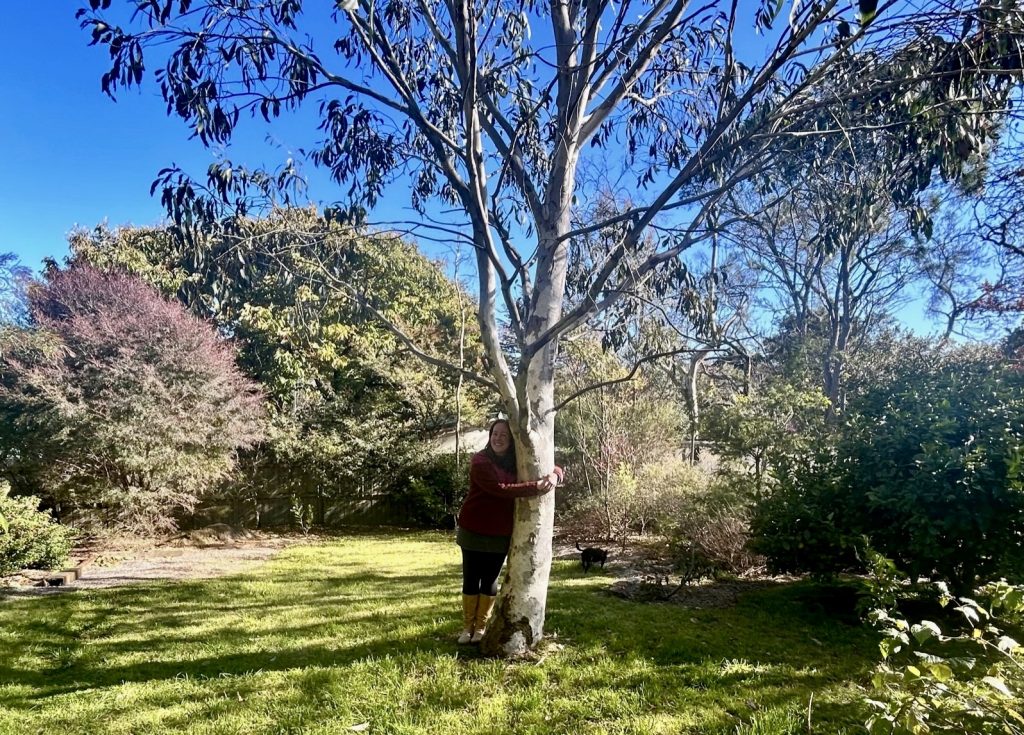
Sara with with the beloved snow gum she planted (Liz Durnan)
5. Grass minimisation
Who wants to push around a mower all the time? Some grass is nice for the dogs and kids to play on, but under trees and shrubs it’s a nuisance and competes with your new plantings. The ‘lawn’ was and is still continually infested with ‘bad’ grasses that have masses of seeds, or make huge, tough clumps. Many other ground cover weeds seem destined to invade too, just as you get on top of one, another arrives. They are legion and too numerous to mention!
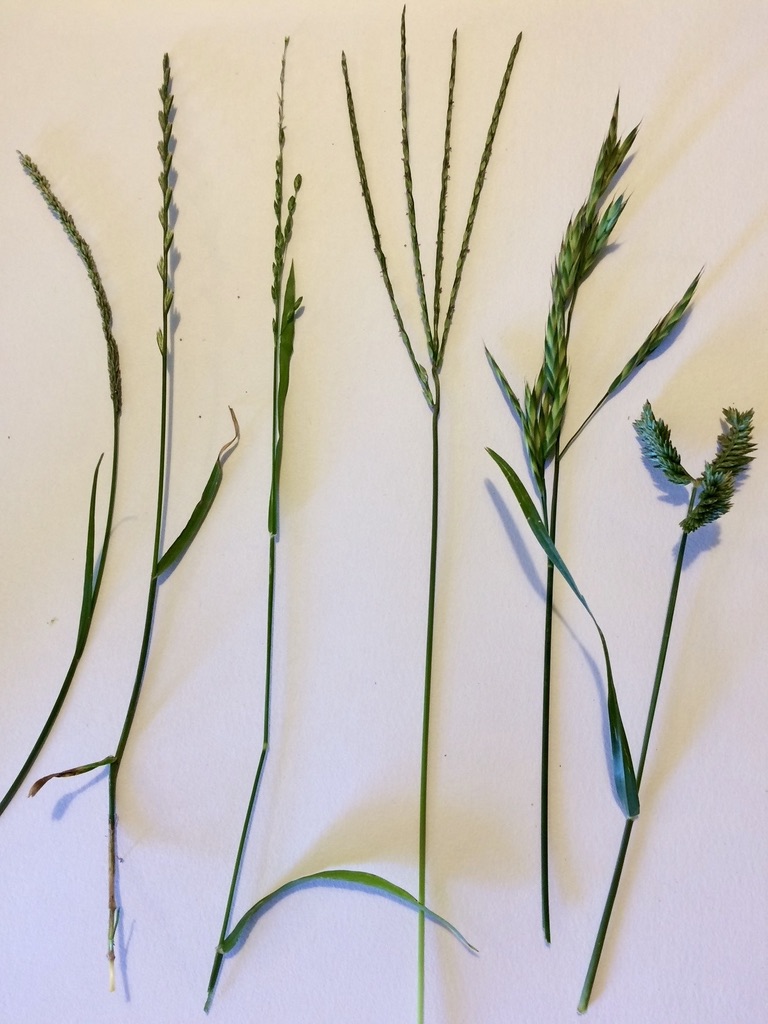
Garden grass species (Sara Reilly)
The local landscape suppliers have provided me with truckload after truckload of various mulches – horticultural and ‘euccy’ – and over the years I’ve dug up a lot of grass and replaced it with mulch. Once the native trees and shrubs start shedding their leaves, they’ll help keep the pesky grass away too. The bowerbirds need sticks and natural mulch on the ground to make their bower.
6. Year-round flowers
Flowers are a visual delight, and it’s lovely to have something flowering all year round. Daphne comes out in the middle of winter and smells divine, and it does well in the upper Mountains. The champions are bulbs – they pop up out of nowhere and amaze you as you watch them open – snowdrops, daffodils, jonquils, tulips, bluebells. You can make a drift of them by throwing the bulbs onto the ground in a scatter and burying them where they land. They’ll pop up each year in late winter as a prelude to the riot of colour during the Spring season as flowers continue to open. Magnolias, cherries and crab apples are some favourites for their spectacle. Bees and tiny birds like the Eastern Spinebill, the New Holland Honeyeater and the Silvereyes love them.
7. Vegetables
The lost art of growing vegetables by the community is extremely satisfying but give yourself a few years to figure things out and learn from mistakes. Protection from birds and other pests is so important. Those bower birds must be fuming when they see my peas and beans sitting on their stems inside my beautiful wooden ‘Vegetable Palace’. It was made by a local carpenter friend almost entirely from the timber recycled from the old shed.
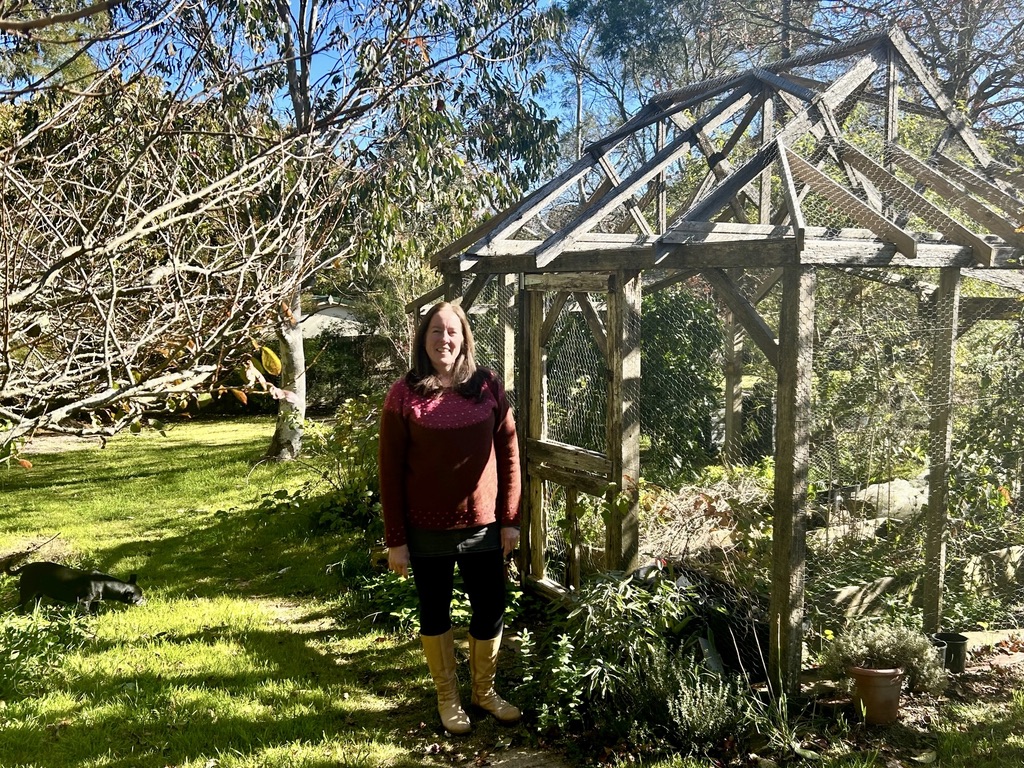
Sara’s protected ‘Vegetable Palace’ constructed by a local carpenter with timber from the old shed
8. Fruit trees
An amazing array of fruit trees grow in the upper Mountains. This small block supports a lemon tree, orange tree, and a grapefruit tree in an ‘orchard zone’ with plenty of sun. There are raspberries, blueberries, boysenberries, redcurrants and even tiny wild alpine strawberries growing everywhere as ground cover. They are white and taste like Wizz Fizz! There are tamarillos, feijoas, figs, plums, pears and apples.
The bower appears
The shrub that the Satin Bowerbird made their bower under is an indigofera australis; there is a second one nearby of a slightly different variety but both are endemic to this region. The photos below show how well hidden the bower is beneath the two indigofera bushes. It may be that they prefer this particular species for their bower sticks.
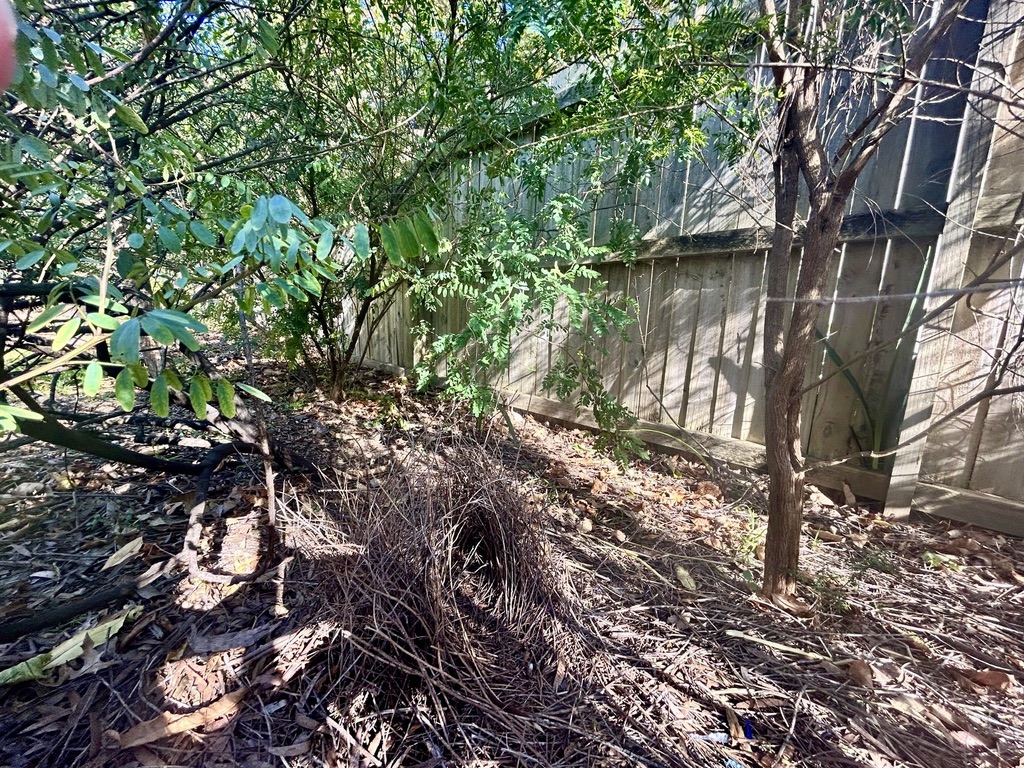
A close-up of the bower (Liz Durnan)
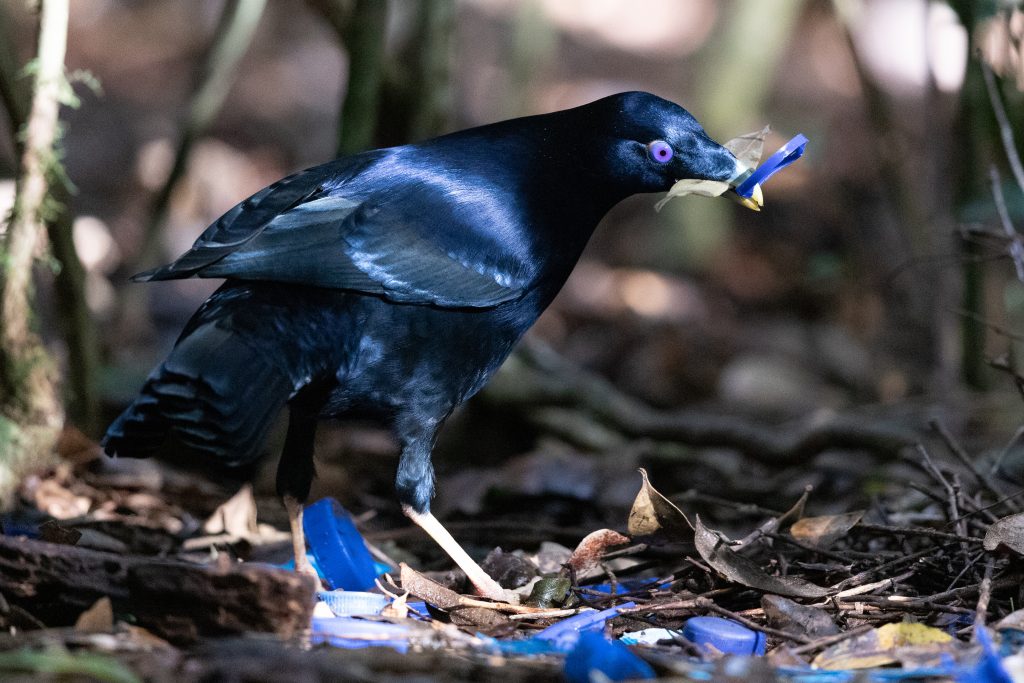
An Australian satin bowerbird (stock photo)
It appears that many birds are using this bower. The black bowerbird is the male, although the juvenile males are green, as are the females. You will be amazed at the strange noises they make during their mating rituals. You can stand still and watch them bobbing up and down in the bower, shooting through the bower, and generally making nooky! The blue objects are always changing as they steal each other’s objects. Modern industrial production has provided them with a startling array of polyethylene products, such as bottle tops, pegs, tooth pickers, fancy twine wrapping. They also like to put grape hyacinths down there in spring, and yellow and blue tail feathers.
It is a wonderful experience to live so close to them and have a ‘birds eye view’ into their world. You could be relaxing at home and hear them carrying on day in day out at the peak of mating season. They really are adorable, and if your fruit and vegies are safely behind nets and wire, you can sit back, relax and enjoy the show.
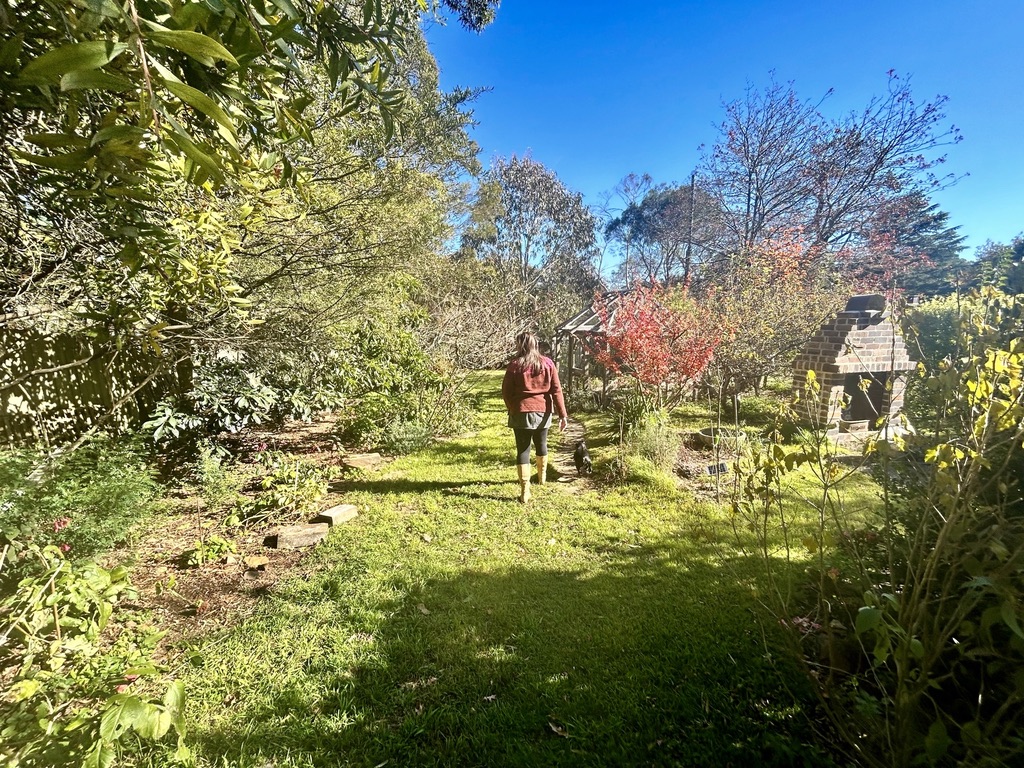
Sara walking towards the bower (Liz Durnan)
This story has been produced as part of a Bioregional Collaboration for Planetary Health and is supported by the Disaster Risk Reduction Fund (DRRF). The DRRF is jointly funded by the Australian and New South Wales governments.


